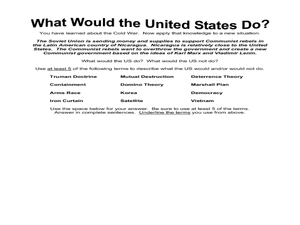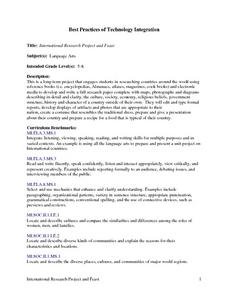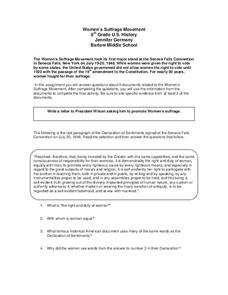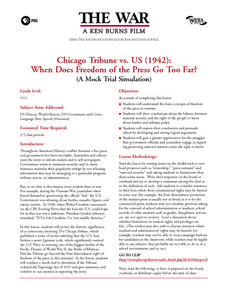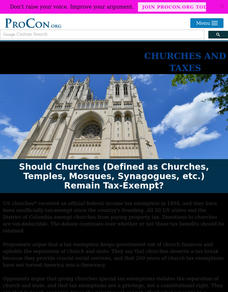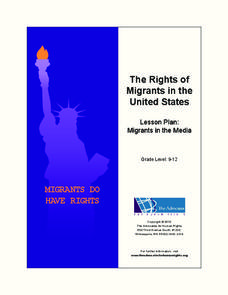Curated OER
What Would the United States Do?
In this U.S. history scenario worksheet, students use their critical thinking skills to explain how the U.S. would respond in a scenario that involves the Soviet Union sending support to Communist rebels in Nicaragua.
Curated OER
Revolution Case Study: France
In this French Revolution case study worksheet, students read a brief overview pertaining to the time period in French history and then respond to two short answer questions.
Curated OER
International Research Project and Feast
Students research countries around the world. They develop and write a research paper that includes maps, photographs, and diagrams. They describe the culture, society, economy, religious beliefs, government structure, and history of...
Curated OER
Social Studies Review for Grade 4 (4.1)
In this social studies review for grade 4 (4.1) learning exercise, 4th graders answer 25 multiple choice questions in standardized test format about U.S. history.
Constitutional Rights Foundation
Winner-Take-All: The Two-Party System
Two's company, three's a crowd. High school historians learn about the Electoral College, a two-party, winner-take-all voting system in the United States. The instructional activity explains the pros and cons of the two-party system,...
Curated OER
Women’s Suffrage Movement
Though the movement for Women's Suffrage stretched over several decades and across two centuries, the final few years were the most difficult hurdle in many ways. Use a document-based question writing exercise to make inferences about...
Curated OER
India and China Establish Empires: 400 BC - AD 550
Follow India as it journeys through history from the first Buddhist King, Asoka, and the rise of the Mauryan Empire to the establishment of the Gupta Empire 150 year later. This presentation clearly presents historical facts covering 950...
Curated OER
Rise of English Democracy
In this rise of English democracy study guide worksheet, students read a brief overview pertaining to the time period in English history and then respond to a reflection question.
Curated OER
Chicago Tribune vs. US (1942): When Does Freedom of the Press Go Too Far?
Students define freedom of the press in peace and war time. As a class, they identify the need for the public to be informed, but discuss where the line should be drawn to protect national security. They develop their arguments and...
Curated OER
Political Parties and Election Results, 1997 and 2000
Students become familiar with the results of the Canadian Federal Election by analyzing data on the number of valid votes by political affiliation. In this civics lesson plan, students integrate data and knowledge with other research...
Curated OER
Oral History of World War II
Students research how citizens from the United States respond to the onset, duration and aftermath of World War II. They view clips from the movie "Swing Shift" and discuss the roles of civilians, minorities and military personnel. They...
School Improvement in Maryland
United States Foreign Policy
Policies of United States government which promote or fail to promote relationships with other countries—national defense, arms control, security of other nations, trade, human rights, economic sanctions, foreign aid, etc.—come under...
Curated OER
The United States Presidents
For this government worksheet, students find the names of US presidents and the answers are found by clicking the link at the bottom of the page.
Curated OER
Presidents
In this government worksheet, 5th graders find the words that are related to the topic of presidents. The answers are found by clicking the button at the bottom of the page.
Curated OER
The Presidents
In this government worksheet, students find the names of the presidents in the word search puzzle. The answers are found by clicking the link at the bottom of the page.
Curated OER
Presidents of The United States
In this government worksheet, middle schoolers find the necessary names of the presidents and the answers are found at the bottom of the page.
Curated OER
Using Current Events to Understand Elections
Eleventh graders explore the the major phases of the electoral process for president. For this US Government lesson, 11th graders compare and contrast the delegate system of nomination and the electoral college.
Curated OER
Wisconsin History and Information
Fourth graders complete a multi-faceted project about the people, places, and government of Wisconsin. Working with traditional and technological resources, they research various topics related to the history of Wisconsin and create a...
Alabama Department of Archives and History
America in Space: German Voices from Huntsville, Alabama
Project Paperclip, the Redstone Arsenal, and the Huntsville Space Center are all featured in a resource that investigates the contributions of Dr. Werner von Brawn and other German scientists to the US space program....
Curated OER
Churches and Taxes
Churches have been tax-exempt since the founding of America, but should they be? Pupils ponder the question as they browse the website in preparation for a class debate or discussion. They research the history of tax-exemption for...
Advocates for Human Rights
Migrants in the Media
Class members examine two documents—The Universal Declaration of Human Rights and The Rights of Migrants in the United States—and then use reports in the media to assess how well the US is doing in ensuring these rights.
PBS
What Are the Primaries and Caucuses?
What are the essential differences between primaries and caucuses? As part of a study of the process by which Americans select their candidates for US president, class members examine the nominating process, the changes that have...
Rutgers University
How the Allies Won World War II: Island-hopping in the Central Pacific
Using primary source documents, young historians explore the strategies the US used to defeat Japan during WWII. They also learn about the American military experience, and innovations that changed the style of warfare. High schoolers...
California Polytechnic State University
Australian Geography Unit
At the heart of this resource is a beautifully detailed PowerPoint presentation (provided in PDF form) on the overall physical geography of Australia, basic facts about the country, Aboriginal history, and Australia culture and lifestyle.
